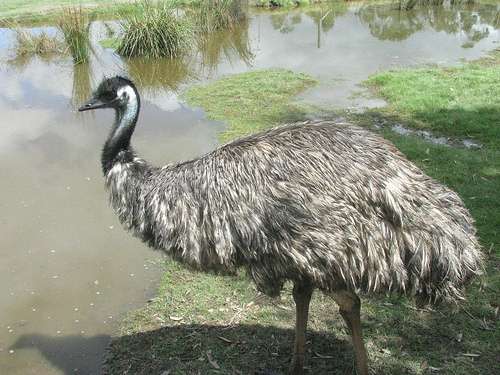Emu movements chronicled in seed dispersal project

GPS technology attached to emus (Dromaius novaehollandiae) has reinforced the role the world's second largest extant bird plays in dispersing seeds in the environment as well as indicate they have started moving with purpose rather than wandering aimlessly.
A study by Murdoch University into seed dispersal by emus in the Avon Valley Jarrah forests in the south-west, used GPS technology to track the movements of six once-captive emus released into the area over several weeks.
By downloading GPS information as often as every 15 minutes, researcher Dr Philip Ladd was able to recognise distinct patterns in the emu's movements between the remnant forest patches and neighbouring agricultural land.
"The movement pattern of the birds has changed a lot from what might have been a rather random wander with concentration once they found a food source to…moving along fence lines looking either to get into the paddock or just…not moving back into the native forest," he says.
"Now they tend to hang around the paddocks and eat the food put out for sheep or cattle.
"The watering troughs also provide them with water so they do not have to go to the river to drink."
Five of the emus retained their GPS devices after release, each showing both periods of large mean squared displacement (MSD), reflecting migration between habitats and periods of little MSD during local foraging.
Seed variety builds up in emu gut
Emus are arguably the most important frugivore in the jarrah forest, their generalist diet and gut retention times of up to 100 days mean a large amount and variety of seeds can be deposited in a single scat.
"Certainly for some cases the emu may not retain the seeds for all that long, say a few hours only," he says.
"However, as they can walk quite fast this still can disperse the seeds quite a long way."
Previous studies suggest emus are capable of travelling hundreds of kilometres over the course of a few months and Dr Ladd says this long-range mobility is essential for certain plant populations to remain genetically viable.
"They can move seeds a long way compared with other species," he says.
"We would predict that if emus disappeared then the plants might not have ways of getting their seeds dispersed.
"This would lead to seeds falling around their parent plants and thus inbreeding occurring," he says.
More information: "Study of seed dispersal by Emu (Dromaius novaehollandiae) in the Jarrah (Eucalyptus marginata) forests of south-western Australia through satellite telemetry" Emu 115(1) 29-34 dx.doi.org/10.1071/MU13113
Provided by Science Network WA


















